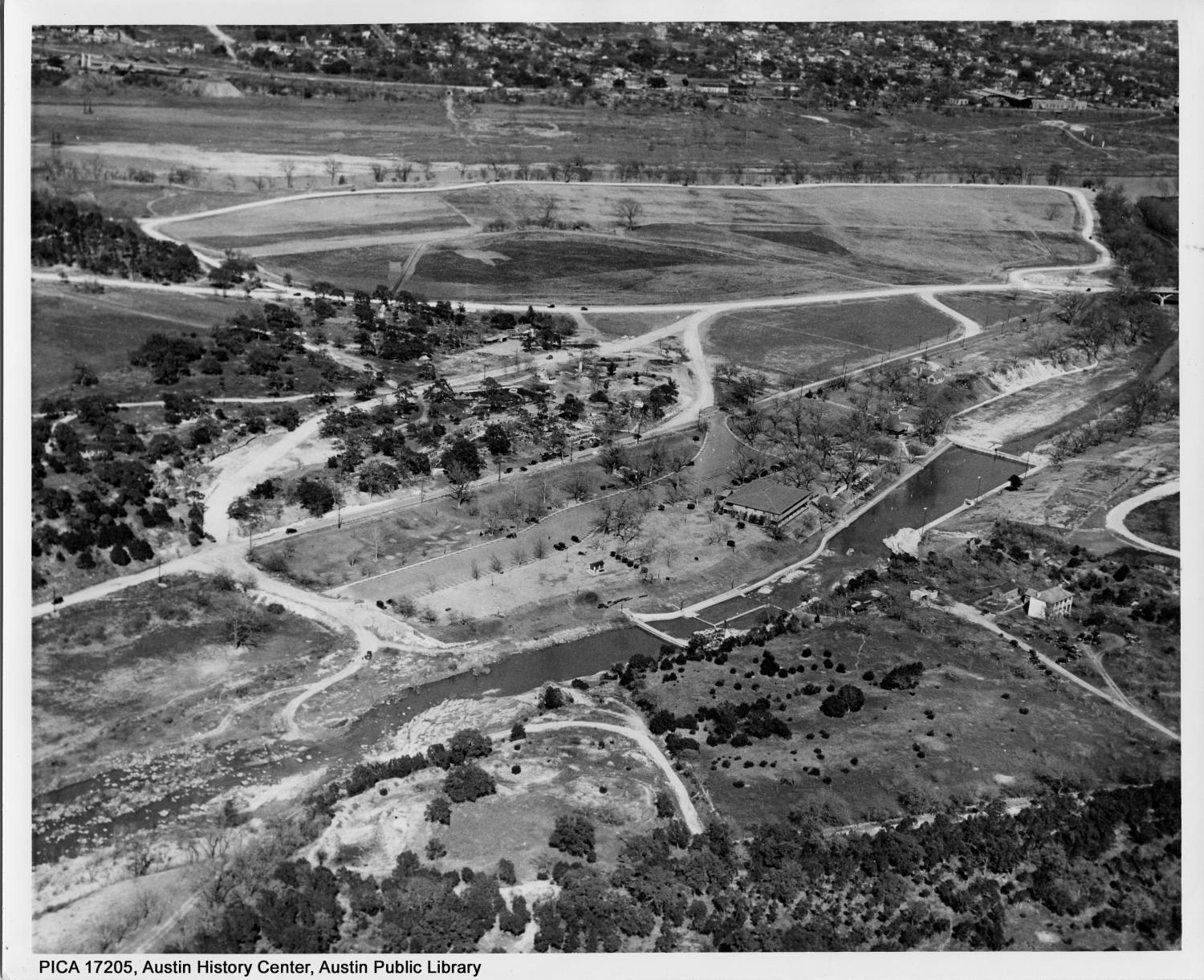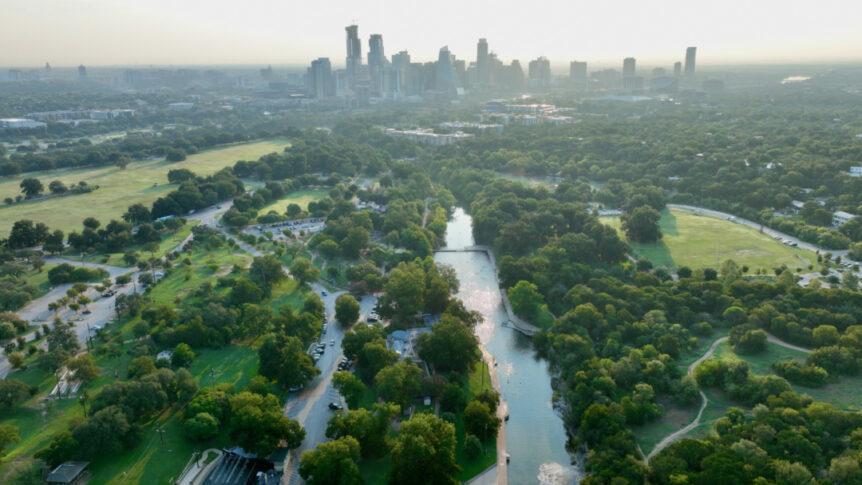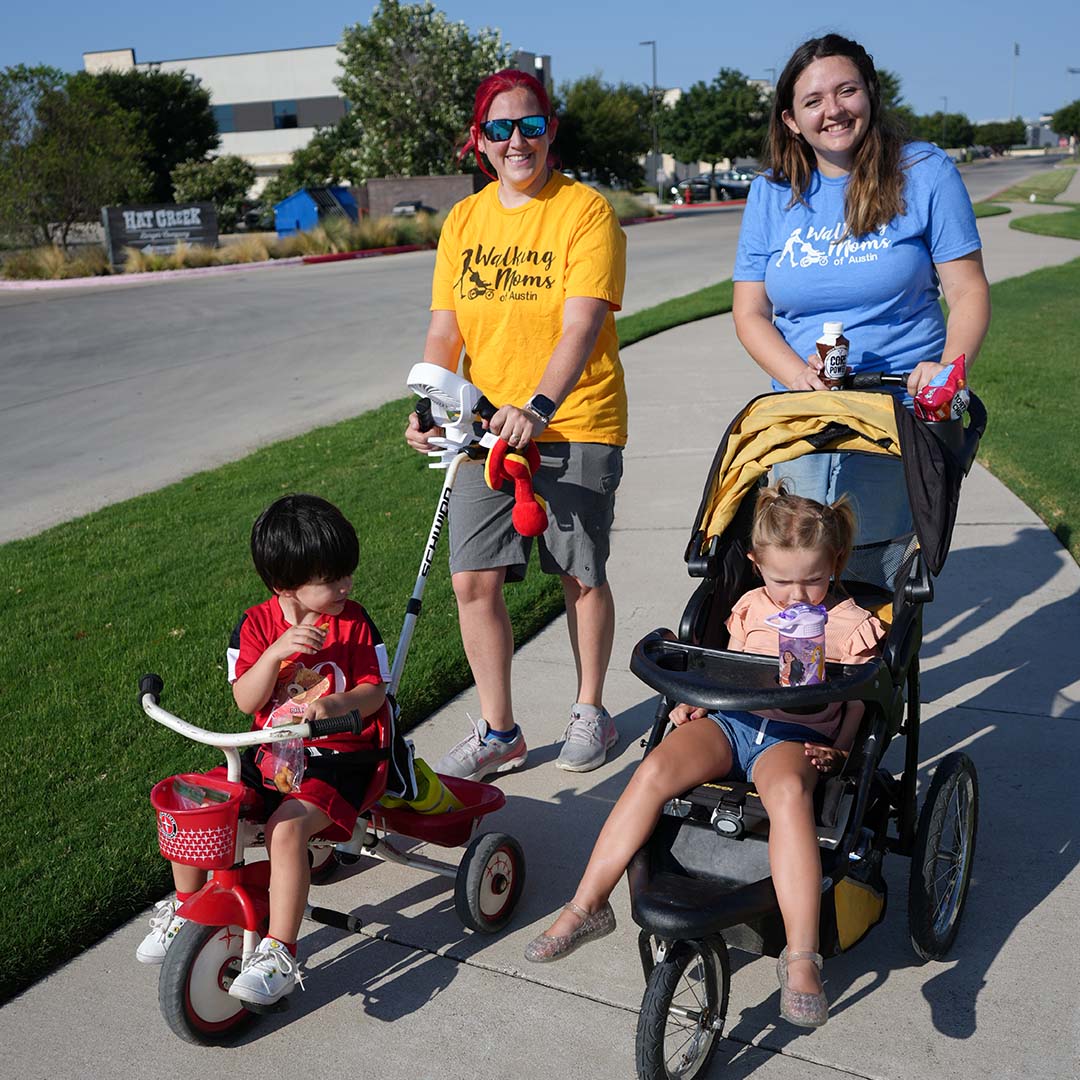In lieu of the final two Parkscast episodes, Austin Parks and Recreation Department has written a guest blog for APF to complete the series.
Think about your favorite parks outside of Austin. Can you remember the first time you were there? Maybe it was a national park like the Grand Canyon or a state park like Mother Neff or even a city park like Central Park. What do you recall about the stories of the park? What is the history of the people in that space? Did you learn about the type of animals that call it home? Or did you gain more understanding about the geology or plants of this park? Finally, I want you to recall whether you had to search online about the park or whether the stories of your favorite parks were told in the park.
Each of these questions can help us interpret a deeper meaning and connection to the parks we love. One aspect of the Zilker Park Vision Plan is a guide for what stories around Zilker Metropolitan Park can connect us to the space in a deeper way. I hope this guest post from the Austin Parks and Recreation Department encourages you to think about what stories you want to know more about in Zilker Park as well as other parks throughout Austin.
Guiding Principles and Goals
The Austin Parks and Recreation Department (PARD) often develops guiding principles and goals, sometimes called project values and objectives, to provide a framework for projects. The draft Zilker Park Vision Plan Guiding Principles and Goals were first presented at Community Meeting #1 on June 29, 2021. After community feedback, the principles and goals were honed into the final Guiding Principles and Goals under the following themes
- Nature and Ecology
- History and Culture
- Equity, Diversity and Inclusion
- Accessibility
- Sustainability
The Guiding Principles and the correlating goals have driven the planning process for the park and the storylines.
Interpretive Storylines
Part of the Vision Plan includes suggestions for a future interpretive plan for Zilker. Driven by the “History and Culture” and “Equity, Diversity and Inclusion” Guiding Principles and Goals, the planning team identified five storylines to guide future storytelling at the park.
Zilker Park is a complex space with a complicated history. The storylines are for the park as a whole and are only a road map. Anyone doing interpretive planning in the future will do additional research to define the main stories and develop how visitors discover and engage with the interpretive themes. But, today, we want to know: What might be missing from these storylines? What is it you really want to understand more deeply about Zilker Park? The information below can be found in the draft Zilker Vision Plan, pages 185 to 189.
Storyline 1: Barton Springs Has Been a Constant, but Evolving, Destination for Humans for at Least 10,000 Years.
- Indigenous occupation: Archeological sites reveal that Indigenous people camped, hunted, fished, and quarried rock here for at least 9,000-10,000 years before European colonizers arrived. The Vara Daniels site, which lies beneath the Great Lawn and rugby fields, is one of the “largest deeply stratified sites known in Texas.” Today, it serves as evidence of Indigenous people’s long-term presence on this land, and presents an opportunity for contemporary Austinites to learn more about the generations of Native people who preceded them here.
- Euro-American settlement and business enterprises: Beginning in the 1830s, Euro-American settlers brought their agricultural traditions and commercial/industrial enterprises to this landscape. Within the present-day park boundaries, men including William Barton, Ashford B. McGill, and Dr. Barclay Townsend farmed and ranched; Michel Paggi, Jacob Stern, and the Rabb family all operated mills on the creek; Michael Butler mined clay for his brickworks; and Andrew J. Zilker used the spring water for his icemaking business and pasture for the horses that pulled his delivery wagons. While Barton Springs was already a popular swimming destination by the mid-1800s, Paggi built a dam on Barton Creek in the 1870s to create a swimming hole and a bathhouse to accommodate swimmers.
- Park origins and development: Through a series of land deals between 1917 and 1934, Andrew J. Zilker transferred three parcels of land that would become Zilker Park to the City of Austin. However, Zilker did not profit from these transactions; rather, he specified that the proceeds from the first two deals be placed in a trust for Austin High School, and gifted the third parcel of land outright. The subsequent development of Barton Springs and the surrounding land reflected popular ideas about recreation at the time (active recreational facilities in a naturalistic environment). Under the City of Austin and various New Deal institutions, the park’s naturalistic features and recreational facilities were expanded and remnants of its commercial and industrial past were removed. As the city grew and automobile ownership became more accessible, the park became a popular destination for white, middle class Austinites.
- Modern gathering space: Today, Zilker Park is a blend of active recreational facilities (e.g., Barton Springs, hiking trails) and gathering spaces for events large and small, public and private (e.g., Zilker Clubhouse, Girl Scout Cabin, picnic tables for private gatherings; large open spaces for public events like ACL, Blues on the Green, the Zilker Kite Festival and Austin Trail of Lights). Austinites have also built a culture of informal gatherings at sites throughout the park, such as the Monkey Tree on Azie Morton Road.

A look into the past: Zilker Park as it stood in 1938 (Photo courtesy of Austin History Center, PICA 17205)
Storyline 2: Zilker Park’s Extant Built Environment Tells Part of The Story of Austin’s Settlement, Development, and Evolving Identity
- Zilker Park’s built environment reveals clues to some aspects of Austin’s history:
- Settlement and Early Industry: The old Rabb homesite and the location of the Paggi grist and ice mill (at Sunken Garden/Old Mill Spring) both evoke Austin’s early industrial period and speak to how crucial access to flowing water was for many people and industries.
- Expansion: As Austin’s population expanded, it outgrew some of Zilker Park’s facilities. One of these was the Barton Springs Bathhouse. Completed in 1947, architects Delmar Groos and Dan Driscoll designed the new bathhouse with a Streamline Moderne aesthetic. This style strayed from the rustic-style park buildings constructed during the 1930s, but both approaches had something in common: they took inspiration from Zilker Park’s landscape. The bathhouse was sited around the location’s large trees, and the low-slung building took inspiration from the horizontal limestone terraces found throughout the park.
- Zilker Park by Austinites for Austinites: Zilker Park’s design was led by two local men: engineer Frederick A. Dale and architect Charles H. Page. Other Austinites were also involved in its design and construction: Hugo Kuehne designed the Caretaker’s Cottage and the first Barton Springs bathhouse; plants for the Rock Garden came from the home garden of Dr. T.S. Painter on W. 33rd St.; young architect Bubi Jessen designed the iconic entry columns; materials and labor for custom light fixtures were donated by Gage Brothers, Weigel Iron Works, and Fox and Schmidt; and the Austin Police Department helped fund and build the shooting range.
- Zilker Park and the New Deal: Many of Zilker Park’s most iconic features were developed under various public works programs during the Great Depression.
- Funding: Most of the Texas parks projects that were developed during this time were intended to be state parks. Zilker Park was an exception, and it received funding thanks, in part, to Congressman James P. “Buck” Buchanan, who represented Austin in the House of Representatives and was able to use his position on the House Appropriations Committee to fund work in his district.
- Design: The park was developed under various New Deal programs, and its design was especially influenced by the National Park Service’s emphasis on highlighting the natural topography and flora, and constructing rustic-style buildings using natural materials.
- Construction: In 1933, Charles Page secured funding from the Civil Works Administration (CWA) to build the park, including the stone entrance columns and the beloved Zilker Clubhouse, both of which still stand today. In 1934, Civilian Conservation Corps (CCC) Company 1814 designed and built roads, cleared land, and constructed park facilities (picnic tables, barbecue pits, and lighting). The National Youth Administration (NYA) repaired flood damage in 1935-1936 and built the Sunken Gardens in the late 1930s, and the Works Progress Administration (WPA) helped improve the park’s lily pond. Without this substantial federal investment, Zilker Park would look very different today.
Storyline 3: Zilker Park Has a Long History as a Contested Landscape.
- White settlement and white supremacy at Barton Springs:
- Enslavement of African Americans. When William Barton settled on the banks of Spring Creek (known today as Barton Creek) around 1837, he brought his wife, children, and up to 30 African Americans he enslaved with him. The Bartons ranched cattle here. The African American men and women whom Barton enslaved likely worked in the Barton Family’s ranching and domestic activities, increasing the Bartons’ wealth through their uncompensated labor.
- Settlement on Indigenous lands. As a white settler in Indigenous people’s traditional homelands, William Barton was in frequent conflict with Comanches who claimed the land as their territory.
- Exclusion of non-white and lower income citizens: When the City of Austin took ownership of Zilker Park in 1917, it instituted fee-based access, which solidified the pool as the domain of the white middle class. The implementation of the 1928 Master Plan, and specifically its recommendation for segregated facilities for Black citizens, codified this racial division. It wasn’t until Black activists, such as Joan Means Khabele, Bertha Means, V. Saundra Kirk, and Willie Mae Kirk, fought to integrate Barton Springs that the park became officially accessible to Black Austinites. Nevertheless, racial disparities persisted: many Black community members continued to feel unwelcome in the park and at the pool well after the facilities were officially desegregated.
- Community organizing and activism: Since the late 1960s, community members and grassroots activist organizations, including the Zilker Park Posse, Save Barton Creek Association, Save Our Springs Alliance, and Parks and Recreation Advisory Board, have challenged development plans that would negatively impact the springs and the park (e.g., development in the Barton Creek watershed, construction of MoPac Expressway in the park). They have also supported scientific research and education and advocated for better regulations to protect and preserve Barton Springs, Barton Creek, and Zilker Park.

An aerial view of Barton Spring Pool and Zilker Park, 2022 (Photo courtesy of Austin Parks and Recreation Department)
Storyline 4: The Ebb and Flow of Water Indelibly Shapes the Ecology of Zilker Park.
- Water as it shapes the landscape: The creeks and river create riparian habitat where water-loving plants thrive, wildlife is drawn to the fresh water, and resident bird populations seek out prime nesting and feeding locations. In the western half of the park, which is more characteristic of the Edwards Plateau, oak-juniper woodlands grow in shallow soils that formed atop limestone rock. Here, rainwater flows down through the limestone and into the Edwards Aquifer far beneath. The plants that grow in this area are adapted to the faster draining soils.
- Springs as habitat: The springs in the park and the Edwards Aquifer beneath it support the endangered Barton Springs and Austin Blind Salamanders. As the park was developed and new buildings and features were constructed, the springs’ flow was disturbed and the salamanders’ populations decreased. Through careful planning, habitat restoration, and limited development, the salamander populations in Zilker Park are growing.
Storyline 5: Zilker Park Offers Austinites the Opportunity To Experience Great Biodiversity in a Relatively Small Area.
- Ecotone: Zilker Park provides habitat for more than 600 plant and animal species. It straddles the Edwards Plateau and Blackland Prairie ecoregions and blends characteristics of both. Within the park’s 351 acres, Austinites can spot armadillos while hiking through oak-juniper woodlands typical of the Texas Hill Country, paddle along shoreline communities of bald cypress trees and snapping turtles, and wade in a natural pool fed by the same springs that support two species of endangered salamander.
- Biodiversity: At least 224 species of birds – more than 85% of the wildlife species that call the park home – can be found in Zilker Park. They include a diverse array of species drawn to the varied habitats that make up the park. Migratory songbirds stop to rest in the park on their way to their northern breeding grounds, and egrets and herons hunt along the banks of the river and in the creeks.
Those are the proposed interpretive storylines for Zilker Park. What are your thoughts? What storylines are you excited to see in greater depth? What is missing? The Zilker Park Vision Plan team is looking forward to hearing more about the storylines as well other aspects of the draft Vision Plan. Share your feedback at https://publicinput.com/ZilkerVision.




